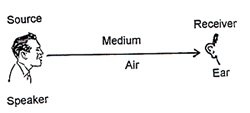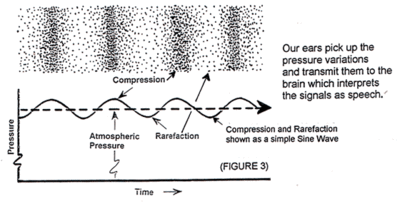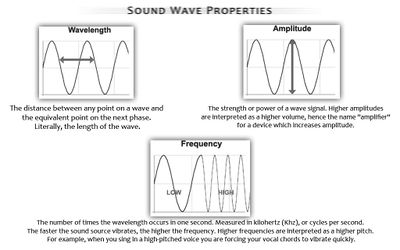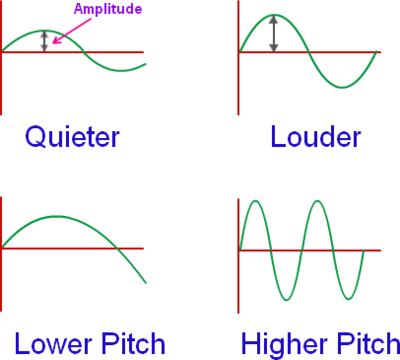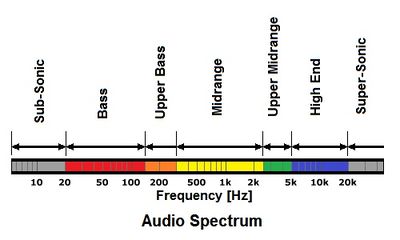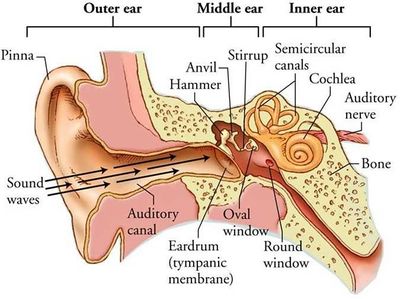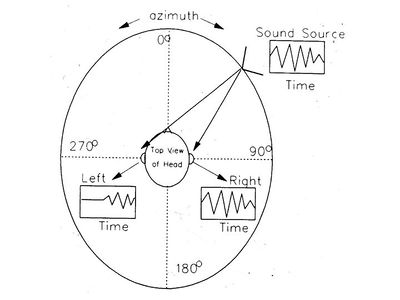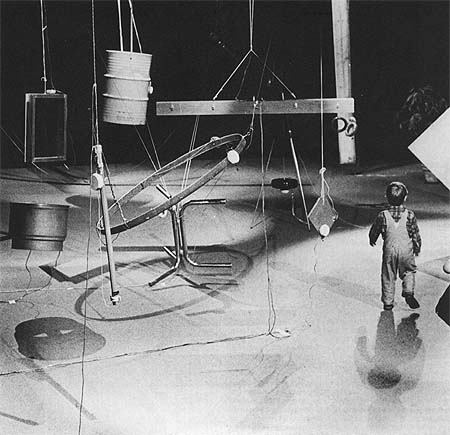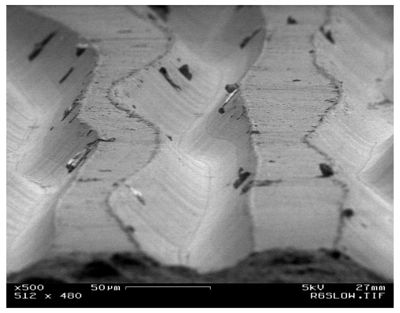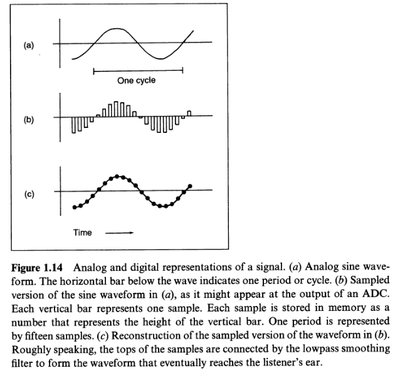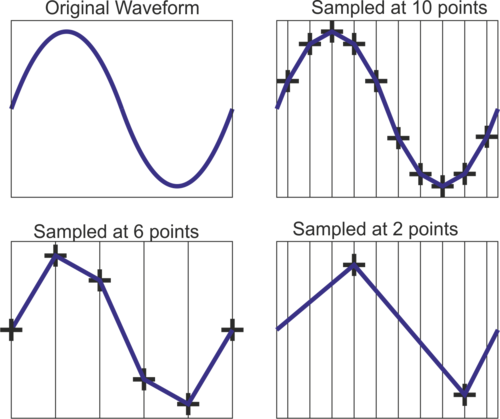Sound and listening
What is sound
We experience sound thought displacement of air molecules from a source to a the receiver.
When a source emits a sound, it makes the air molecules compress and decompress, traveling away from the source.
The rate of this compression-decompression variation is what is called the frequency of a sound. And the amount of air molecules displace give us the amplitude or volume of a sound.
Sound wave properties
- frequency = pitch
- measured in Hertz (Hz) or cycle per second. 1Hz = 1cycle/sec
- amplitude = volume
- measured in decibel (db)
Sound waves on liquid
audible sound
Human audible sound, or the hearing spectrum, is located between 20Hz and 20 000Hz of of the acoustic spectrum
How do we listen?
How does the movement of air molecules gets perceived as sound?
Spacial Perception Sound
How do we detect the position where sound is coming from?
- arrival time difference
- amplitude difference
- filtering, by the outer ear
Janet Cardiff - binaural mics
Hearing as composing
Recording and listening exercise.
- record 1 to 2 minutes of sound
- write down all you here during those minutes, either with or without headphones
4'33
4'33 (1952) is a probably the most famous John Cage composition, where the performance stands in front of the audience without playing a single note, for 4 minutes and 33 seconds.
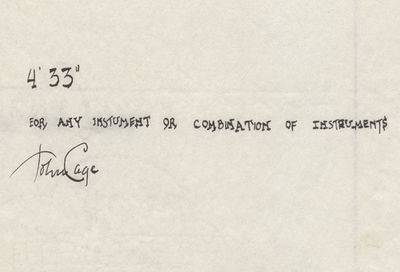 http://hyperallergic.com/85779/the-original-john-cage-433-in-proportional-notation-19521953/
http://hyperallergic.com/85779/the-original-john-cage-433-in-proportional-notation-19521953/
- hearing as composing
- all sound can become music
Expanded listening
contact mics
- listen to how solid objects respond to vibration
- due to its physical properties each object will respond - resonate - differently to vibration
- The resonant frequencies are the frequencies that are emphasized by the object
David Tudor - Rainforest (1968)
- http://composers-inside-electronics.net/rainforest/rainforest/RAINFOREST.html
- https://www.youtube.com/embed/iT9HP48sHTg
- http://www.getty.edu/research/tools/guides_bibliographies/david_tudor/av/rainforest.html
- Holzer, Derek, and Mads BEch Paulszewski. n.d. “Rainforest 2012.” http://macumbista.net/files/rainforest_overview.pdf
Electromagnetic pickups
Instead of capturing acoustic waves, like acoustic microphones, electromagnetic pickups capture electromagnetic fields.
Christina Kubisch Electrical Walks explore cities electromagnetic fields.
- http://www.christinakubisch.de/en/works/electrical_walks
- http://cabinetmagazine.org/issues/21/cox.php
- https://www.youtube.com/watch?v=5tCphr8pbFk
Digital audio
Analog audio is stored in a continuous analogue to its source.
http://www.synthgear.com/2014/audio-gear/record-grooves-electron-microscope
More grooves: http://sessionville.com/articles/vinyl-through-the-microscope-looking-glass
Digital audio on the other hand is stored discretely (in segments or samples).
sampling rate and bit rate
Two parameters are essential to digital audio:sampling rate and bit rate
sampling rate: how frequently the analogue signal is sampled File:Discrete-signal.png
- The sampling rate of CDs is 44.1KHz: discrete samples of a signal are stored 44100 times each second.
- Digital video cameras tend to store audio at 48KHz.
bit rate: accuracy of sampling - how many values are used to represent the amplitude of a signal
- The bit rate of a CD is 16-bit: 2¹⁶ (65536) values are used to encode the audio digitally
- 8 bit 2⁸ (256) values
audio formats
- uncompressed: aiff, wav, flac
- compressed: mp3, ogg
Editing
With Audacity http://www.audacityteam.org/
“Audacity.” 2017. FLOSS Manuals. Accessed January 11. http://write.flossmanuals.net/audacity. http://archive.flossmanuals.net/audacity/_booki/audacity/audacity.pdf http://archive.flossmanuals.net/audacity/_booki/audacity/audacity.epub
Bibliography
- Collins, Nicolas. 2006. Handmade Electronic Music. London: Routledge.
- “Sound:An Interactive eBook on the Physics of Sound.” 2017. Sound: An Interactive eBook on the Physics of Sound. Accessed January 11. https://soundphysics.ius.edu/.

